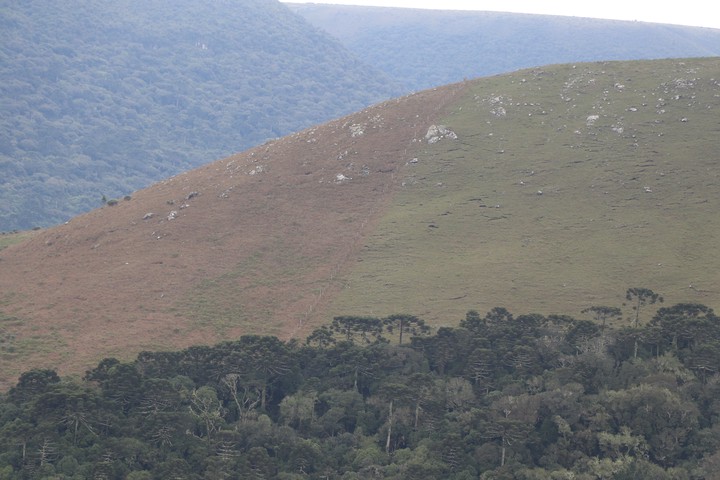The influence of fire and cattle grazing on Araucaria population structure in forest-grasslands mosaics
 Image credit: Johnny Silveira
Image credit: Johnny Silveira
Abstract
Disturbances caused by land management via fire and cattle grazing can alter the population structure of keystone species that change the output of vegetation dynamics. Adult araucaria trees (Araucaria angustifolia) can facilitate the establishment of other woody plants and, thus, influence the expansion of forests over grasslands in the highlands of southern Brazil. Here we aimed to check araucaria population structure under two types of management – with or without fire and grazing– and in three habitat types:\ forests, shrublands and grasslands. We sampled araucaria populations in 40 transects (100×4 m), half of each located in the forest, and the other half, in variable extensions of shrublands or grasslands. Of the 40 transects, 18 were under management with fire and grazing and 22 in a protected area where the two disturbances are prevented (São Joaquim National Park). Overall, we sampled 339 araucaria seedlings, 59 saplings, 44 juveniles and 128 adults. Population structure differed both among habitats, between types of management, and between the same habitats but under distinct types of management. Population density was 1.4 times higher in areas with fire and grazing than without such disturbances, which was caused mostly by a larger number of seedlings. Under fire and grazing, we found 1.4 times more adults in forests, 5.7 times more seedlings in shrublands and 5.3 times more seedlings in the grassland than in the same habitat but without disturbances. Our results indicate that araucarias reach and germinate under all conditions but rarely surpass the seedling stage in grasslands and shrublands where fire and grazing is used. Consequently, fire and grazing disturbances should slow down forest expansion over shrublands and grasslands. In contrast, when disturbances are barred, araucarias can grow large enough to trigger their facilitative effect and then gear up the pace of forest expansion.